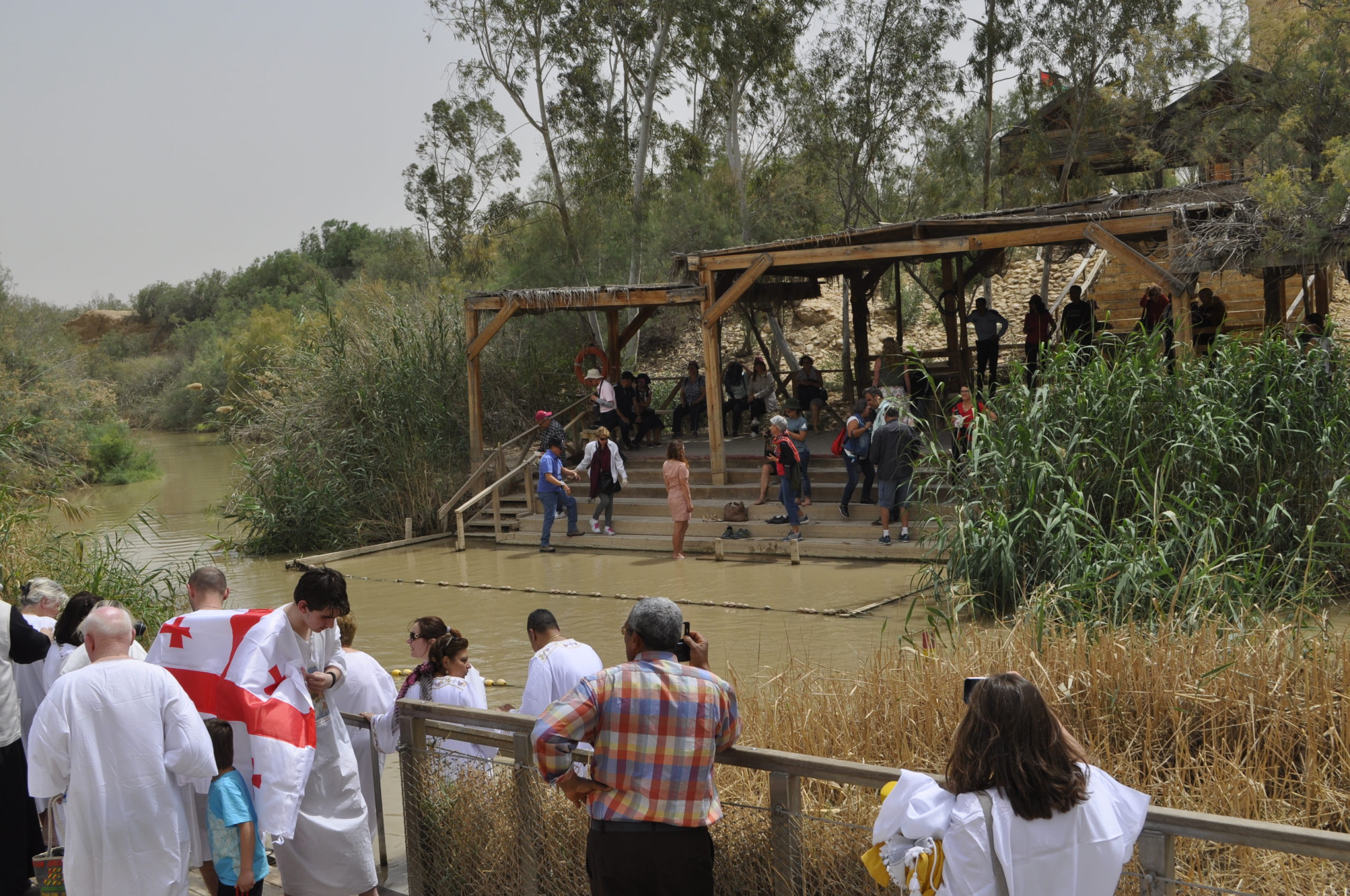
In our times, Christians from the regions surrounding the Jordan River – Israel and Palestine to the West, and the Kingdom of Jordan to the East in Transjordan – commemorate the baptism site of Jesus on both banks of the river. The site in Transjordan, al-Maghtas, means ‘baptism’ or ‘immersion’ in Arabic. The site in the West Bank is named Qasr al-Yahud, meaning the ‘Palace of the Jews’.’
To avoid offending sensitivities, the Latin Catholic Church organizes two events: for the Feast of the Baptism of the Lord, the Franciscan Custos of the Holy Land presides over a Mass on the west bank of the Jordan. A few days later, the Latin Patriarch of Jerusalem celebrates another Mass on the east (Jordanian) side. The reason is largely political: unlike in Jesus’s time, the Jordan River now serves as a border between two countries.
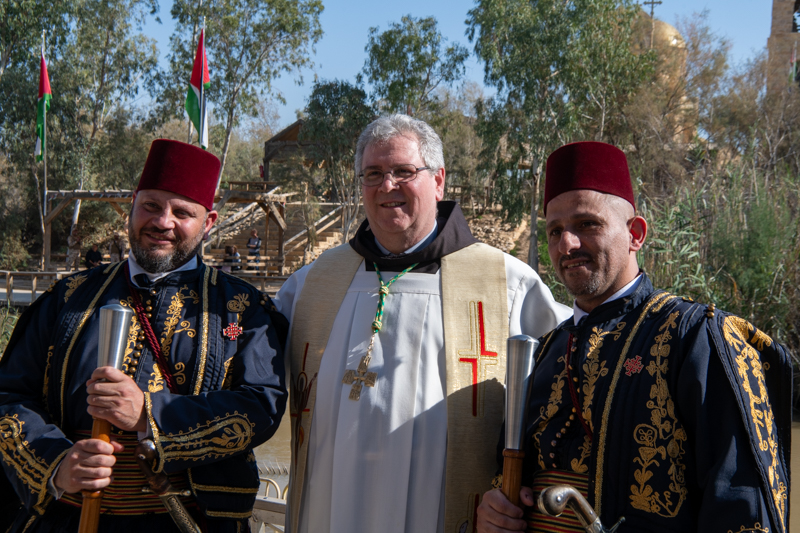
The Custos of the Holy Land, Fray Francesco Patton, with two kawas, in Qasr al-Yahud (CustodiaTerrae Sanctae – 01/07/2024)
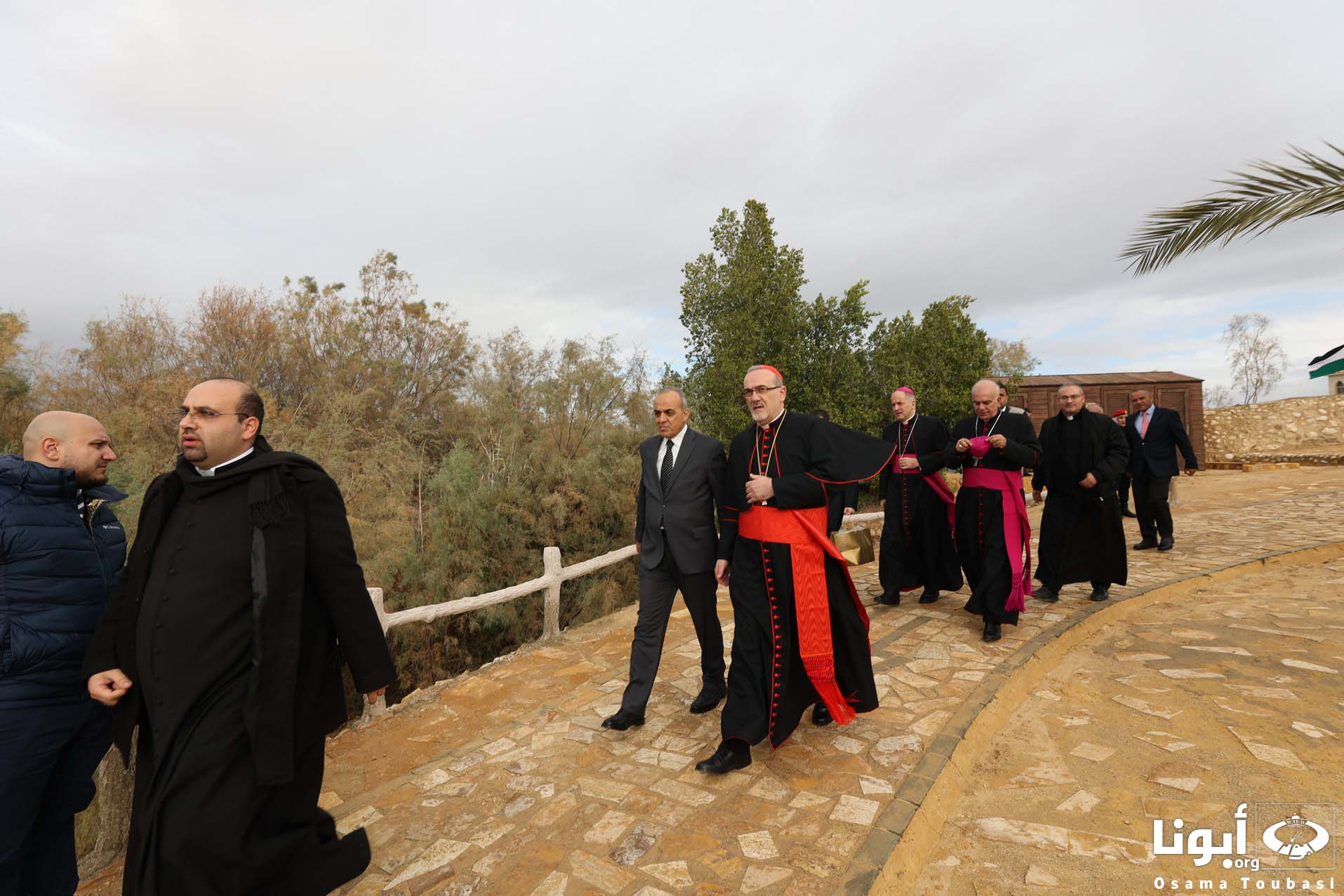
The Patriarch of the Holy Land, Pierbattista Cardinal Pizzaballa, at al-Maghtas (Latin Patriarchate of Jerusalem – 01/12/2024)
Where did Our Lord’s baptism take place?
The four Gospels describe John baptizing in the waters of the Jordan. Saint Matthew (Mt 3:13) and Saint Mark (Mk 1:5) add that the crowds who came to John for his baptism of conversion came from Jerusalem and Judea. However, the Baptist’s fame extended beyond Judea, as some of his disciples whom he sent to follow Jesus were from Galilee: James and John from Capernaum, and Peter, Andrew, and Philip were from Bethesda.
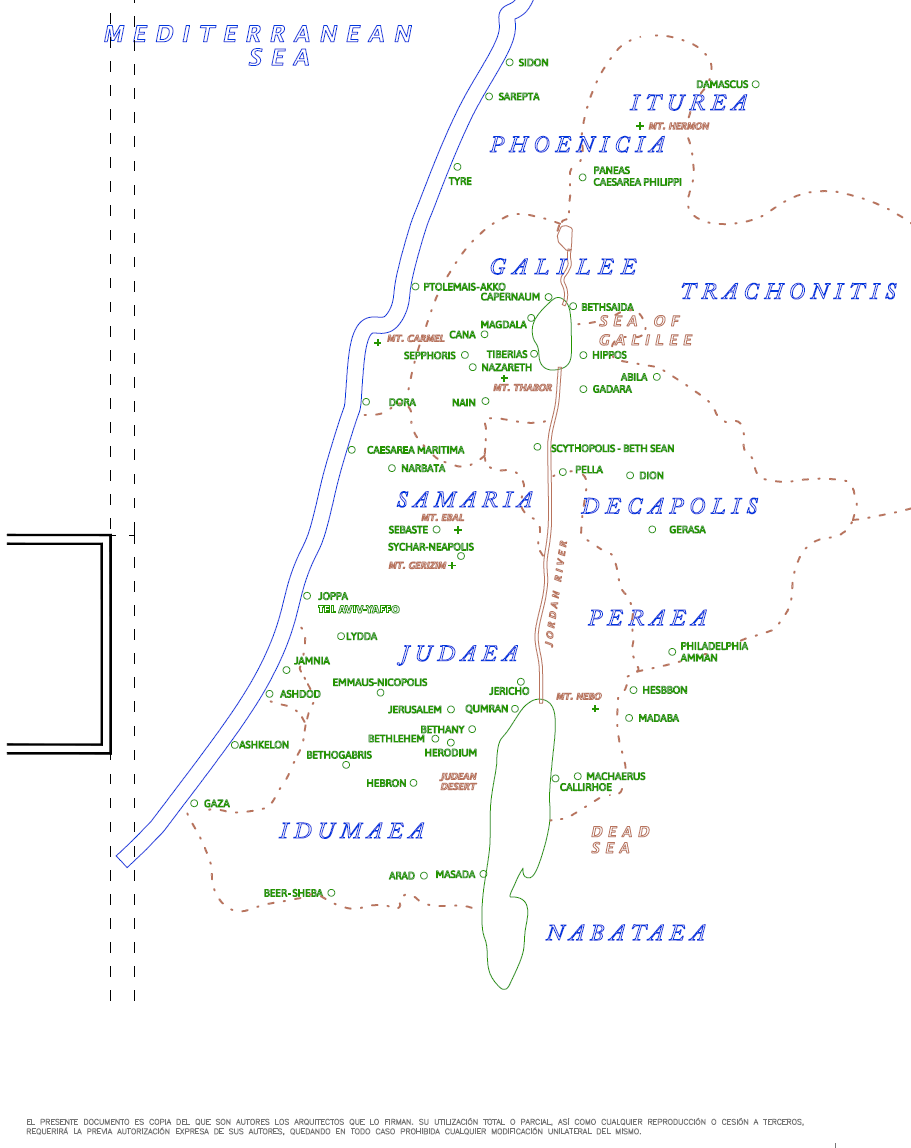
Map of Judea in the time of Jesús (Saxum Visitor Center).
Such a connection between Galilee and Judea can be explained if we consider that, in the time of the Lord, Herod Antipas – son of Herod the Great – was not only the tetrarch of Galilee as Saint Luke tells us (Lk 3:1), but also reigned over a territory on the other side of the Jordan. It was in this territory, called Perea in Greek, that he ordered the killing of Saint John the Baptist at the fortress of Machaerus (cf. Josephus, Antiquities, XVIII, 117).
Therefore, a devout Jew could travel from Galilee to Jerusalem for the Temple festivals almost without leaving the Land of Israel – that is, without passing through Samaria. From Galilee, the caravan of Jewish pilgrims would cross the Jordan River near the Greek city of Beit She’an-Scythopolis. Then, they would skirt the mountains of Gilead and Ammon in Transjordan to the south. Opposite Jericho, the pilgrims would again cross the Jordan.
“This happened in Bethany across the Jordan, where John was baptizing” (Jn 1:28)
Saint John tells us in his Gospel that John the Baptist was baptizing in a place called “Bethany.” And to avoid confusion with the Bethany of Lazarus, Martha, and Mary, he adds “across the Jordan” (Jn 1:28). Two centuries later, Origen observed a variant in the early copies of the Gospels: instead of “Bethany,” some manuscripts of Jn 1:28 read “Bethabara.” Although it appears in a minority of manuscripts, Origen prefers the reading “Bethabara” for symbolic reasons. In Hebrew, Bethabara would mean “the place of crossing.” Centuries earlier, God had parted the waters of the river to allow the Ark of the Covenant and the Israelites led by Joshua to pass. Also, at this location, the prophet Elisha struck the waters with the mantle of his master Elijah, who had just ascended to heaven in a chariot of fire.
Despite John explicitly noting “across the Jordan,” Origen and several Christian authors of the fourth century, such as Eusebius of Caesarea and Saint Jerome, locate Bethabara on the western side. Early pilgrims developed a dual tradition that allowed reconciling two seemingly opposing traditions: the dialogue between Jesus and John was commemorated on the eastern side at a site called Sapsaphas; while the baptism of Jesus was remembered on the western shore. The ancient Madaba Map (6th century) reflects this tradition.
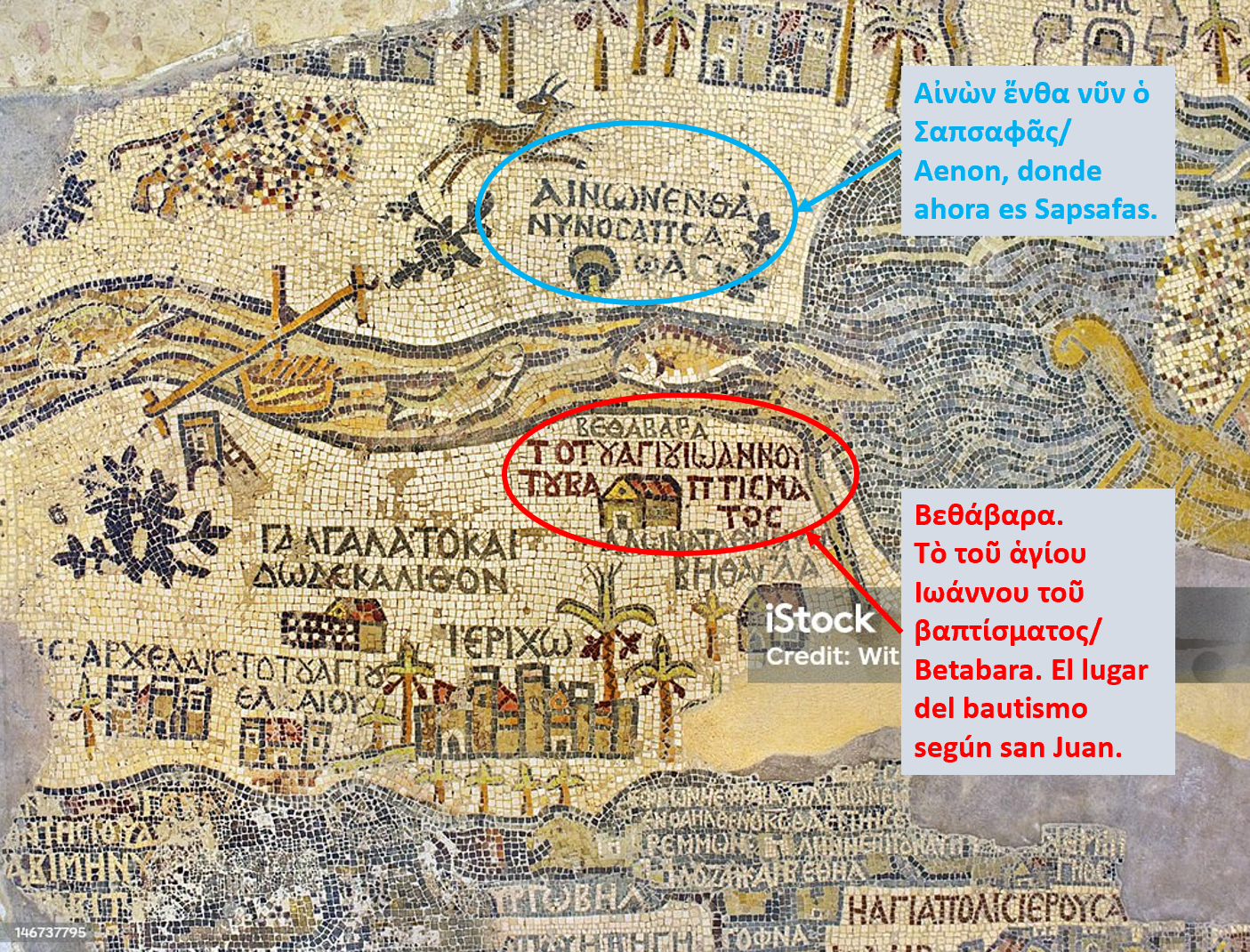
Map of Madaba (Mosaic from the VIth century, Jordan).
As one can imagine, we lack sufficient data to determine with certainty on which side of the river Jesus was baptized. What is known, however, is that after being baptized, Jesus went into the wilderness in order to fast for forty days and be tempted by the devil. Tradition unanimously places this event in the desert of Judea, above Jericho.
By Henri Gourinard
